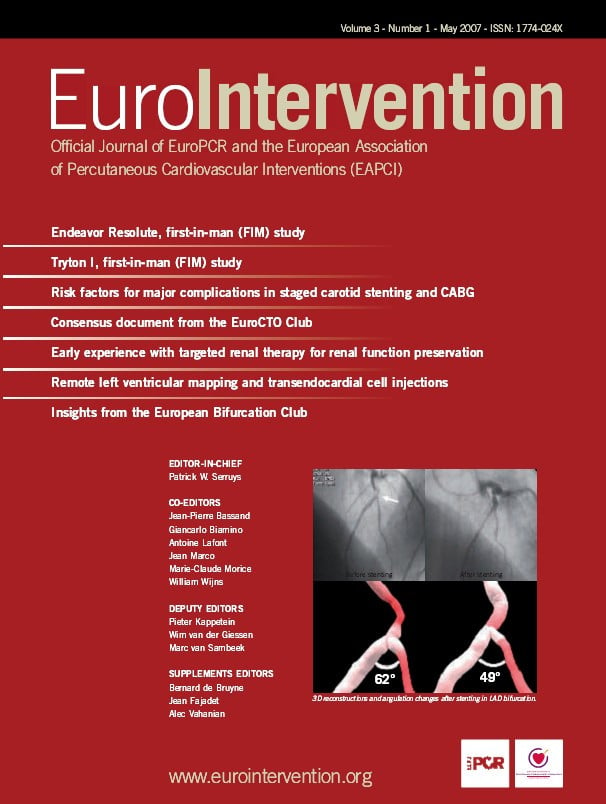A new beginning
For many of you attending the EuroPCR this year the big difference will be the country we are meeting in. For the first time in the history of this scientific gathering we will be leaving France and heading for Spain and Barcelona. But for us, the EuroPCR has another aspect, one which sets it apart from all previous years, because this year it is OUR meeting as well.
We have said this many times before, but it values repeating: the EAPCI, the direct outgrowth of all our collaborative efforts – whether on the WG10, or in our national meetings throughout Europe, or in the EuroPCR itself – has been created as the next step in the evolution of our profession. From now on, and since our official founding last year at the ESC meeting, through our collaboration with this journal and the EuroPCR, we are all intimately connected – a symbiotic relationship that will only help progress our speciality.
A common goal
In a recent interview, Jean Fajadet, whose specific role as the current chair of our international affairs and national societies committee is to “facilitate and optimize the communication between EAPCI and all national interventional cardiology working groups”, underlined our efforts. A key element in our founding philosophy is our dedication to building close collaborative relationships between ourselves and all national groups through formal and direct contact. The goal is simple, we need to incite, inspire and encourage active involvement by these national working groups with the EuroPCR and the annual meeting of EAPCI in order to be the vital organisation that we set out to be.
We must remember that the EAPCI welcomes all professionals whose main activity is percutaneous cardiovascular interventions and who want to participate in our common goals of clinical research, scientific activities, and education in order to improve interventional procedures and the quality of patient care. As an example of this, Jean points to such activities as the successful (and oversubscribed!) Fellows course run last November in London by Carlo di Mario and George Dangas which offered preparation for future European certification exams in interventional cardiology.
More information on all our various activities can be found on our website at: www.escardio.org/bodies/associations/EAPCI
You make the difference
It is clear for those of us already active in the EAPCI that the difference is you, the individual practitioner. We are committed to building our speciality together, and your participation, whether on a local level, in our European-wide registries or meetings are crucial for all of us. It is for these reasons that the program of the EAPCI is of such seminal importance at this year’s EuroPCR, because it underlines the reality of this new dynamic.
We look forward to your joining us there.
Highlights of these meeting include:
Update on EuroHeart Survey and European registries
Tuesday, the 22nd May
16:30-18:30 in room 5
ESC@EuroPCR - the first disclosure of the new ESC guidelines on treatment of non- STEMI
Wednesday, the 23rd May
18:00-19:30 in room 5
EAPCI General Assembly
Thursday, the 24th May
18:00-19:30 in room 5
Awards ceremony – EAPCI Fellowship awards
to be presented by Antoine Lafont.
Friday, the 25th May - 12:00-12:30 in room 1

